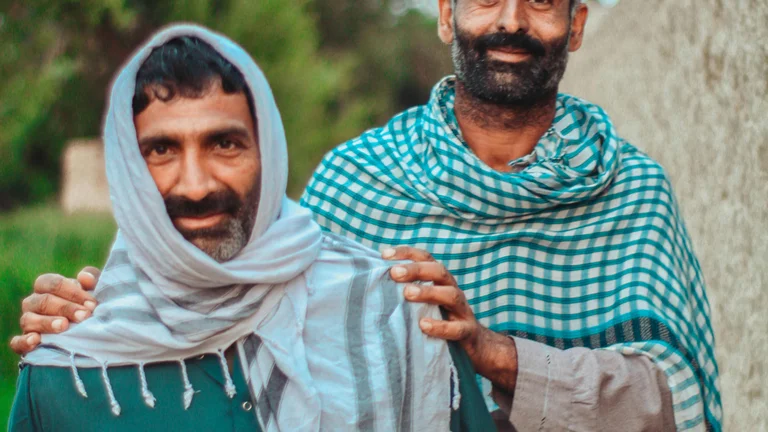The Evolution of Storytelling: Introduction to Short Dramas

The landscape of visual storytelling has consistently evolved alongside advances in technology, shifting consumer behaviors, and cultural trends. One of the most significant recent developments in narrative media is the emergence and popularization of short dramas—compact, tightly woven stories usually ranging from a few minutes up to around 20 minutes per episode. These short dramas challenge the traditional norms of how audiences consume and engage with stories, reshaping expectations around pacing, character development, and thematic depth. Unlike full-length films or hour-long television episodes, short dramas demand concise, deliberate writing and direct emotional connection, delivering impactful narratives in a fraction of time.
The rise of digital streaming platforms and mobile-first content consumption has played an essential role in this shift. As viewers balance busier schedules and diminishing attention spans, short dramas fit naturally into the gaps of daily life, providing efficient but meaningful story experiences. Their episodic nature encourages binge-watching in smaller chunks while maintaining narrative continuity. This new form is transforming not only how viewers watch but how creators approach storytelling, emphasizing economy, intensity, and innovation.
Understanding the implications of short dramas requires exploring their format, the psychology behind audience engagement, and the cultural ramifications stemming from this evolution. As this article develops, it will analyze how short dramas influence narrative structure, viewing habits, production methods, and the overall audience relationship with stories. Moreover, we will investigate case studies, stakeholder perspectives, and the future trajectories of this compelling medium.
The Format and Structure of Short Dramas
Short dramas distinguish themselves through their restrained runtime, which naturally influences structural choices and storytelling devices. Traditional drama narratives often adhere to three-act or five-act structures stretched over lengthy durations, allowing expansive character arcs and subplots. In contrast, short dramas require an adapted approach that delivers compelling texture within narrow temporal constraints.
Creators working in this format must prioritize narrative clarity and emotional resonance from the first moments. Every scene, line of dialogue, and character gesture carries heightened significance. This economic use of storytelling elements abolishes filler and excess exposition. Character development is conveyed through sharp, telling interactions or symbolic visual cues. Plot progression happens with urgency but remains coherent and impactful.
While each episode typically functions as a self-contained unit, many short drama series implement serialization, where episodes cumulatively build on each other. This hybrid model fosters deeper investment without overwhelming the viewer with extensive time commitments. Consequently, writers experiment with cliffhangers and mini-arcs within tightly woven frameworks, balancing resolution with anticipation.
The brevity also encourages thematic conciseness. Short dramas often spotlight singular issues or emotions—such as a moment of betrayal, a fragment of a relationship, or a slice of societal conflict—rather than sprawling epic tales. This focus allows narratives to explore topics from fresh angles, offering impactful insights without dilution. The constraints sharpen creativity, prompting innovative visual storytelling techniques and non-linear narratives.
Audience Engagement and Psychological Drivers
The psychology behind audience engagement with short dramas reveals critical reasons for their growing appeal. Modern audiences face an abundance of content choices, leading to selective attention and preference for formats that provide immediate gratification and manageable investment. Short dramas cater precisely to these desires.
The compressed runtime aligns well with the human attention span, which cognitive studies suggest averages between 8 to 12 minutes for focused, distraction-free engagement. Short dramas typically fall within this window or slightly exceed it, ensuring viewers can immerse themselves without fatigue. This effect is amplified by platform algorithms pushing personalized content that fits user behavior patterns, reinforcing engagement loops.
Moreover, the episodic nature of short dramas satisfies narrative curiosity without demanding prolonged dedication. Viewers can start and pause at will, revisiting episodes in flexible sequences, which respects modern multitasking lifestyles. This accessibility fosters a sense of control and convenience, factors strongly linked to positive viewing experiences.
Emotional impact is delivered efficiently in short dramas through condensed storytelling. Scientific research into narrative transportation—the psychological process where a person becomes absorbed in a story—shows that shorter, emotionally charged segments effectively trigger empathetic responses. This immediate connection encourages viewers to invest in characters quickly and retain emotional impressions post-viewing.
In social media-driven culture, short dramas also benefit from easy shareability and discussion. Their shorter length fits the brief attention spans of social feeds, encouraging recommendations, reactions, and fan engagement. This communal conversation feeds back into popularity growth and cultural resonance.
Production Techniques and Industry Transformation
The rise of short dramas has influenced production methodologies and industry economics in profound ways. With tighter runtimes and generally smaller budgets, these projects call for streamlined processes, nimble teamwork, and inventive resource management.
Many production companies and independent creators find short dramas to be a sustainable entry point, lowering the financial and logistical barriers compared to feature-length films or full television seasons. This democratization expands the pool of creative voices, including those from underrepresented communities, resulting in diverse perspectives previously underserved by mainstream media.
Technological advances such as lightweight digital cameras, mobile editing software, and cloud collaboration tools facilitate this trend. Creators can produce polished short dramas with smaller crews and on compressed schedules, optimizing returns on investment. The prevalence of short dramas on platforms like YouTube, TikTok, and emerging streaming services also encourages innovative marketing and distribution strategies targeting niche audiences.
From a narrative perspective, directors and screenwriters embrace experimental techniques within the format. Non-traditional storytelling styles such as visual poetry, flash fiction adaptations, or hyperrealism flourish in short dramas due to lower risk exposure and audience openness. The shorter commitment length makes viewers more willing to explore unusual approaches.
Here is a table illustrating key differences between traditional TV dramas and short dramas in production and narrative aspects:
| Aspect | Traditional TV Dramas | Short Dramas |
|---|---|---|
| Episode Length | 40-60 minutes | 3-20 minutes |
| Budget | High | Low to Moderate |
| Production Time | Months | Weeks |
| Storytelling Pace | Gradual | Fast |
| Plot Complexity | Multiple subplots | Focused single arc |
| Audience Commitment | Long | Short |
Impact on Viewing Habits and Platforms
Short dramas have altered viewers’ habits, prompting shifts in platform design, content promotion, and user expectations. Where traditional TV viewing was scheduled and appointment-based, short dramas favor asynchronous, on-demand viewing accessible anytime and anywhere.
This on-the-go consumption has transformed platforms to prioritize episode length, viewing completion rates, and social interaction features. Algorithms promote short dramas for their ability to create sustained but intermittent engagement, retaining users without requiring long binge sessions. The rise of mobile-first streaming apps supplements this trend, enabling seamless viewing during commutes, breaks, or moments of downtime.
The flexibility offered by short dramas reshapes what audiences anticipate from story arcs and pacing. Patience for slow builds or drawn-out character arcs diminishes in favor of instant hooks and quick payoff. This change challenges creators accustomed to traditional episodic rhythm but presents opportunities to captivate contemporary audiences efficiently.
Additionally, short dramas often function as gateway content—introducing viewers to particular genres, themes, or creators—with lower time risk, encouraging experimentation. This broadens cultural reach and diversifies audience tastes.
Social media also integrates closely with short drama consumption behaviors. Platforms often feature embedded viewing, comments, and sharing, accelerating feedback loops between creators and audiences. This real-time engagement influences narrative decisions and fosters community-building around specific short dramas.
Case Studies of Influential Short Dramas
Examining specific examples of popular or critically acclaimed short dramas reveals how the medium manifests its transformative potential. One notable case is the South Korean web drama format, which has surged globally, combining culturally resonant storytelling with brief episode durations averaging 10-15 minutes. Shows like “Love Playlist” and “A-Teen” exemplify compact, slice-of-life storytelling that captures young audiences’ attention with authentic dialogue and relatable experiences, all within tight narrative frames.
Western productions such as “High Maintenance” originated as a web series with short episodes before evolving into an HBO series. This trajectory underscores how short dramas serve as proving grounds for innovative storytelling, allowing creators to experiment and build fanbases before scaling up.
Another influential project is the anthology series format exemplified by “Black Mirror: Bandersnatch,” which, although not exclusively short episodes, integrates shorter narrative branches influencing viewing choices, showcasing how interactivity and concise storytelling merge to redefine audience immersion.
Independent short dramas distributed via YouTube and Vimeo often tackle bold social themes—mental health, identity, systemic injustice—with immediacy and authenticity unattainable in broader commercial productions. Their direct-to-audience approach bypasses traditional gatekeepers, amplifying marginalized voices.
Critical Analysis: Narrative Depth vs. Brevity
A prevailing critique against short dramas is their supposed inability to develop the same depth and complexity as longer form narratives. This concern stems from the reduced runtime seemingly limiting character arcs, subtext, or thematic layering. However, this analysis overlooks the nuanced storytelling strategies unique to short dramas that compensate for temporal constraints.
Effective short dramas maximize every storytelling element, employing symbolism, implication, and focused narrative threads to suggest broader contexts without explicitly unfolding them. This economy often invites active audience interpretation, encouraging engagement beyond passive consumption. The brevity allows for sharper, more intense emotional resonances, avoiding dilution caused by prolonged exposition.
Moreover, serial short dramas collectively achieve complexity through cumulative storytelling. Character growth and plot development span multiple episodes, permitting multi-faceted perspectives and gradual revelations. This episodic mosaic approach balances depth with brevity, creating a layered experience over time.
In some cases, thematic complexity intensifies precisely because short dramas distill issues to their essence, removing distractions. For instance, short drama formats tackling social issues can spotlight a single moment of conflict or decision, rendering it more impactful and accessible. This minimalist method appeals especially to younger viewers accustomed to consuming succinct, high-impact media.
Evaluating narrative quality in short dramas therefore requires shifting criteria from length to effectiveness: the ability to deliver meaningful storytelling, provoke thought, and elicit emotional response efficiently. Numerous examples demonstrate that short dramas can rival or exceed traditional formats in these areas through innovation and precision.
Practical Guide for Creators: Crafting Engaging Short Dramas
For emerging writers, directors, and producers exploring short drama creation, some foundational principles are essential to harness the medium’s strengths fully. These guidelines focus on narrative efficiency, character focus, and technical execution.
First, define a concise yet compelling central conflict early. Time constraints mean there is no room for meandering plots or excessive backstory. The narrative must engage viewers within the initial moments.
Second, develop a small cast of characters, ideally one or two protagonists with clear goals and obstacles. Deep psychological portraits are less feasible, so prioritizing distinct, recognizable traits is effective.
Third, employ visual storytelling techniques—lighting, color, framing—to communicate emotional tone swiftly. Cinematic elements function as narrative shortcuts, reducing exposition needs.
Fourth, write tight dialogue with double meanings or subtext, conveying information efficiently. Every spoken word should have a purpose, whether advancing plot or revealing character.
Fifth, structure episodes to have a hook, development, and payoff within minutes. Consider episodic arcs but also ensure each segment satisfies on its own to maintain viewer interest if watched separately.
Here is a checklist summarizing core steps for short drama creation:
- Identify a focused theme or message
- Create a central conflict with high stakes
- Limit characters to essential figures
- Use visual and auditory storytelling strategically
- Write precise, impactful dialogue
- Maintain strong pacing and tension
- Plan episode structure for completeness and serialization
Additionally, creators should embrace viewer feedback, testing episodes with target audiences to refine pacing and clarity. Collaboration with skilled editors helps in trimming excess runtime and emphasizing core emotional beats.
The Future of Short Dramas in the Entertainment Ecosystem
Looking ahead, short dramas are set to become an integral part of the broader entertainment ecosystem, coexisting with films, series, and emerging formats such as virtual reality narratives and interactive experiences. Their adaptability positions them well for future media consumption paradigms shaped by evolving technology and audience preferences.
Artificial intelligence and data analytics could inform tailored short drama content creation, dynamically adjusting stories to audience reactions. Augmented reality environments may integrate short dramatic experiences into daily life moments, blending fiction with reality seamlessly.
Furthermore, short dramas offer unique opportunities for educational and advocacy projects, delivering impactful messages succinctly. Their shareability and emotional intensity make them ideal for campaigns addressing social, environmental, and health issues.
The industry will likely see increased cross-border collaboration enabled by digital distribution, leading to more culturally hybrid short dramas that blend storytelling traditions. This globalization enriches diversity and empathy within narratives.
Finally, monetization models will evolve, combining subscription, advertising, microtransactions, and branded content targeted at short drama consumption patterns. Content creators must balance artistic integrity with commercial viability in increasingly competitive environments.
In summation, short dramas redefine traditional storytelling paradigms by adapting narrative intensity and structure to contemporary viewing behaviors. This evolution expands the boundaries of narrative engagement, fosters innovation, and stimulates new creative and economic opportunities.
FAQ - How Short Dramas Are Changing the Way We Watch Stories
What defines a short drama compared to traditional TV dramas?
Short dramas typically have episodes ranging from 3 to 20 minutes, focusing on concise, focused storytelling with limited characters and fast pacing, unlike traditional TV dramas which have longer episodes with more complex plots and extensive character development.
Why are audiences increasingly attracted to short dramas?
Audiences favor short dramas because they fit into busy schedules, provide immediate emotional engagement, and offer opportunities to watch complete narrative arcs in brief periods, accommodating shorter attention spans and mobile viewing habits.
How do short dramas impact storytelling techniques?
Short dramas compress narrative elements, eliminating filler, emphasizing visual storytelling, using tight dialogue, and often focusing on a single theme or conflict to deliver impactful stories rapidly, requiring different scriptwriting and directing approaches.
Are short dramas capable of delivering deep and complex narratives?
Yes, while short in format, short dramas use focused storytelling, symbolism, and serialization across episodes to build thematic depth and character complexity efficiently, often engaging audiences actively in interpretation.
What production advantages do short dramas offer creators?
Short dramas generally require smaller budgets, shorter production schedules, and nimble teams, making them accessible to independent creators and enabling experimentation with innovative storytelling styles.
How do streaming platforms support the distribution of short dramas?
Many streaming platforms optimize algorithms to promote short-form content, facilitating on-demand availability, mobile-first consumption, social sharing features, and flexible viewing experiences tailored to short dramas.
Can short dramas coexist with traditional narrative formats?
Absolutely; short dramas complement feature films and traditional series by offering alternative pacing and accessibility, often serving as entry points for audiences and experimental incubators for creators.
Short dramas, with their concise format and focused storytelling, are revolutionizing narrative consumption by meeting modern viewers' need for quick, impactful story experiences that fit into busy lifestyles, thereby transforming how stories are crafted, distributed, and engaged with across digital platforms.
Short dramas have fundamentally reshaped the narrative landscape by reshaping how stories are constructed, delivered, and consumed. Their precise storytelling techniques, alignment with modern viewing habits, and production efficiencies make them significant players in contemporary media. As they continue to evolve, short dramas will not only expand creative possibilities but also redefine audience expectations and engagement patterns, ultimately fostering a richer, more diverse storytelling ecosystem.






